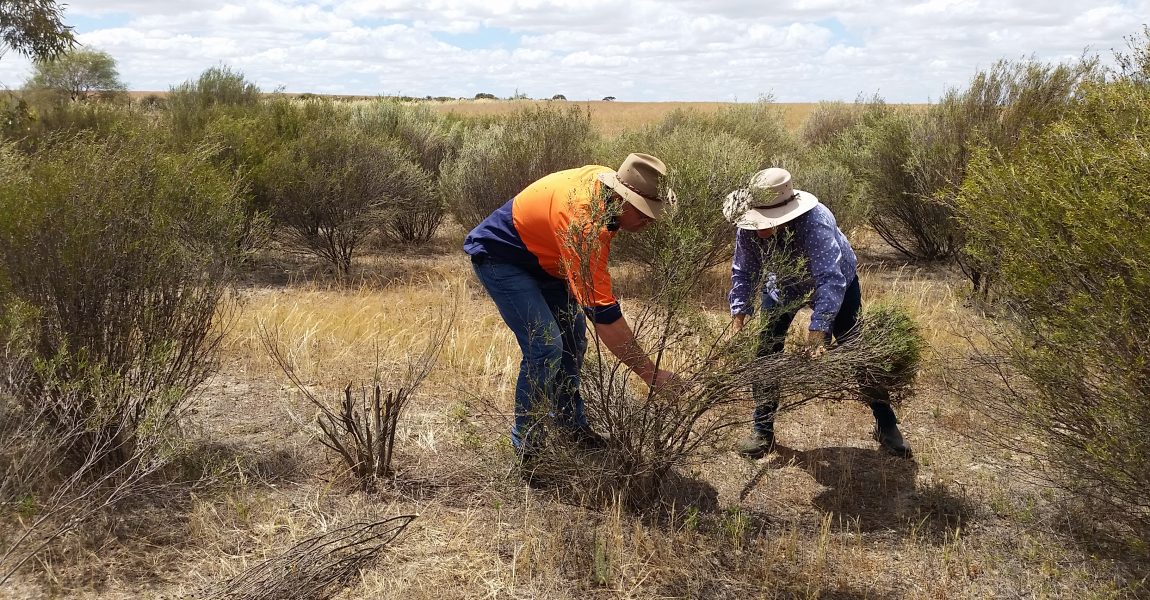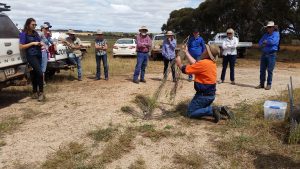
Can extra money be made from planting native trees and shrubs on your farm? This was one of the questions aimed to be answered from a recent field walk at Gabalong, east of Moora, looking at sustainable agriculture options which have both landcare and industry outcomes. The field walk, held 26th October at Les Crane’s property, was a final part of a Moore Catchment Council project reviewing sustainable agricultural projects carried out over the past 10 years in the Moore and Yarra regions. Projects have included brushwood, oil mallee and native tree plantations, saltbush and fodder shrubs, and perennial pastures. The project aimed to find out what worked, what didn’t work, improvements and recommendations for future projects.

Brushwood was a huge project between 2006 and 2009 which saw 1.8 million brushwood seedlings planted on marginal land, in the Moore and Yarra regions, with an industry aim to provide material to create brushwood panel fencing. Les Crane planted around 25ha in 2006 to fix a boggy spot in the paddock and potentially make extra money from harvesting. Rachel Walmsley from MCC said “Brett and Hayley Bowman from Bowman Brush, Meckering attended the field day to talk about and demonstrate harvesting techniques, and speak about markets for their fencing panels. At present the best method for harvesting is by hand and this has been a huge limitation in getting the brush to the factory. The Bowman’s will pay 50c/kg green weight for hand harvested brush but the future lies in the development of a mechanical harvester to get the job done quicker.” The demand for brush panels is on the slow increase and the Bowmans are improving their marketing to get the product more widespread.
Saltbush has been ever popular in the Moore region to reclaim saline land and increase grazing potential. Anameka saltbush is the culmination of 10 years of work by CSIRO and Future Farm Industries to find a native plant and then ultimately an Oldman Saltbush cultivar which is more palatable and digestible. This native super cultivar is currently licenced to Chatfields Nursery in Tammin where seedlings will cost 75c each compared to the average 45c for normal saltbush. Rachel said “The cost is escalated because each seedling is a clone – painstakingly propagated from the parent plants. The cost reflects the extra effort and risk in production. Les planted nearly 3,000 plants as part of the review project but is so impressed he’s ordered 6,000 more for 2018.” Hayley Norman (CSIRO) was on hand to talk about the benefits of Anameka including organic matter digestibility of 64%, crude protein of 19.5% and 25 % ash plus an array of trace minerals leading to improved health and quality of wool. Rachel said “Anameka is for serious saltbush graziers so put it on ok land rather than down in the salt as you’ll get a much better return for your investment.”
Thanks to the National Landcare Program for funding this project. A report, compiled by Project Officer Emma Pearse, detailing all the findings from 123 projects around the region is coming soon.
